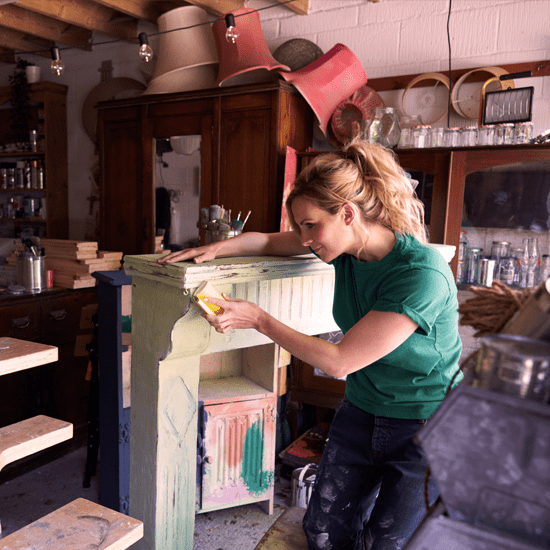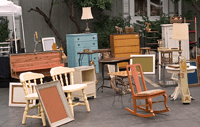
If you’re looking for ways to spruce up your living space without breaking the bank, shopping for second-hand furniture, and giving it a makeover could be your answer. With a little creativity and effort, you can turn an old, worn-out piece into a stylish, one-of-a-kind treasure. In this blog post, we’ll share some tips, dos and don’ts for shopping and transforming second-hand furniture.
Each year, millions of tons of furniture end up in landfills. By choosing second-hand furniture, you’re not only saving money, but also helping the environment by reducing waste. Plus, it’s a great way to find unique pieces that will make your home stand out.
Here are some dos and don’ts for shopping and transforming second-hand furniture:
- DO shop at thrift stores, garage sales, and online marketplaces like Craigslist and Facebook Marketplace. These sites often have hidden gems at unbeatable prices. Keep an open mind and look for potential in each piece.
- DON’T buy furniture with major structural damage. It’s important to inspect each piece carefully before you buy it. Check for broken legs, damaged joints, or severe water damage — these issues can be difficult and expensive to fix.
- DO look for solid wood furniture. Solid wood pieces are usually higher quality and more durable than particleboard or MDF. They’re also easier to paint, stain or refinish.
- DON’T be afraid to negotiate. When shopping at garage sales or online marketplaces, it’s common to haggle over the price. Be polite and respectful, but don’t be afraid to ask for a better deal.
- DO clean and prep your furniture before you start transforming it. This may include sanding, priming, and making minor repairs. A clean and well-prepared surface will ensure a better end-result.
- DON’T rush. Take your time when painting, staining, or refinishing your furniture. Apply multiple thin coats instead of one thick coat and allow each coat to dry completely before adding the next one. This will create a professional-looking finish.
- DO personalize your piece. Use your creativity to make your second-hand furniture unique. Add new hardware, stencil a design, or mix and match paint colors to create a piece that reflects your style and personality.
- DON’T be afraid to make mistakes. Transforming second-hand furniture is a learning process. If you goof, learn from it and keep going. With practice, you’ll get better at spotting potential and turning old furniture into beautiful, functional pieces for your home.
Have you bought or repaired second-hand furniture? What’s do you love most about the process? Share your experiences with the Shop Talk community — and happy thrifting!

Did you know? A growing market
According to a 2021 report by Furniture Today, the resale market for home furnishings is expected to grow by 3% per year through 2025, highlighting the increasing popularity and demand for second-hand furniture.
